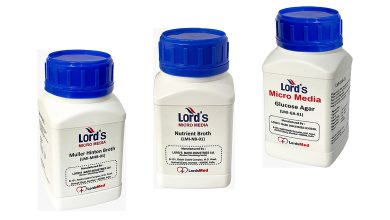Keeping covid at bay with proper sanitation of hospital beds
By Shambhavi

An insight on how proper cleaning process alone annihilates most virus particles on surfaces and keeps in check the spread of infection to a major extent
The organisation and sanitation of healthcare equipment have always been an essential element in the management of any health institute. A great deal of emphasis needs to be given to this especially after the coronavirus pandemic hit the world last year. With the aggressive spread of the highly contagious virus, cleaning
of high touch surfaces and maintenance of reusable pieces of medical apparatus has become exceedingly vital. A proper cleaning process alone annihilates most virus particles on surfaces and keeps in check the spread of infection to a major extent. This is especially indispensable for hospital beds that come in close contact with the patients for extended periods. Hospital beds are also frequently handled by medical personnel, thus multiplying the chances of contamination. The transmission of pathogens from one patient to another, or medical faculty and others can form a vicious cycle of transfer of infection causing the numbers of those infected to multiply rapidly. If this facet is taken care of, the contagion can be impeded on various levels.
The virus is known to be disseminated through immediate contact with respiratory drops of an infected individual or by physical contact with contaminated surfaces. Albeit confirmed and comprehensive research is yet to be done, it is assumed that the survival period of viruses on these surfaces is a few hours to several days. The high
level of communicability of SARS-CoV-2 makes it even riskier to be left untreated on surfaces. The longer it stays on the surface, the more individuals come in contact with it and are infected. This makes it integral to decontaminate these high-touch surfaces as quickly as possible.
The procedure of cleaning infirmary apparatus authorised by the World Health Organisation includes an initial rinsing with soap or detergent and water, followed by an intricate use of an alcohol-based disinfectant. Application of disinfectants on water sensitive objects should be done after the articles are cleaned with a sterile cloth. If there is the unavailability of such disinfectants, diluted bleach solutions can be used as an alternative. Bed rails, headboards, other objects on and near beds should be judiciously cleaned following this standard procedure. Other home-based or self-invented products are not advised because such solutions on uninformed usage can result in detrimental consequences. When using such solutions, it is advisable to read and heed the instructions given by the manufacturer and use specific products suitable for specific surfaces accordingly. Chemicals shouldn’t be mixed unless the label on the product explicitly instructs to do so. Wipeable or disposable covers are suggested for as many items as possible, particularly electronics and other equipment that
cannot be washed to make disinfection an easy and comparatively hassle-free process. Any trivial belonging of the patient left unattended on or around the bed should be carefully discarded with other hospital waste.
Since a lot of research is still in process and plenty of facts have not yet been ascertained, caution and sensibility
become imperative when handling medical equipment and other supplies that have come in contact with covid patients. During this cleansing procedure, use disposable gloves, double masks and other protective gear, avoid touching your nose or mouth and practice adequate personal hygiene to prevent yourself from catching the virus. Ample ventilation throughout the cleaning process should be ensured. Since mattresses are exposed to heavy amounts of bodily fluids and secretions, medicines, and other sources of infection, it requires exceedingly meticulous cleaning.
Launder mattresses and other related items in warm water with soap or detergent. Usage of a disposable, non-
porous cover over mattresses is highly suggested. Dry all the items completely before reassembling the bed. Once the whole process of disassembling the bed is done, cleaning and sterilising the items and putting black everything in place, hands need to be washed instantly. Hands should be scrubbed thoroughly for 20 seconds followed by a proper rinse under clean water to get rid of the deadly virus particles completely, and dried with a clean cloth immediately after.
Though there is an introduction of automated cleaning systems lately, they are not suitable for all kinds of surfaces and carry the risk of damaging certain items. Even the heightened efficiency of these automated techniques, manual cleaning and disinfection are relied upon due to the lack of large scale accessibility and availability of these modern technologies. This reliance makes it mandatory to have good knowledge of how to manually clean hospital beds to inhibit the spread of infection. Thus, the health workforce should be well trained to be able to perform this adequately. Workshops and training programmes should be held for the same.
The rampant spread of the virus during the second wave of the pandemic in India caught the poorly developed health infrastructure off-guarded. As the number of patients increased and infirmaries were crowded with patients, there was a shortage of resources, including beds. New patients were given beds as soon as the previous patients emptied them. Much heed wasn’t given to the sanitation of beds resulting in the virus proliferating rapidly. This instance highlights the importance of on-time sanitation of the hospital equipment and resources, especially beds. The hospital authorities should, thus, be extra cautious with this aspect to prevent the spread of infection. Mattresses should be entirely cleansed each time the patients are switched, whereas other components of the bed including metallic extensions and other items should be cleaned more frequently, preferably daily.
In these trying times, taking responsible steps forward to mitigate the ongoing global crisis becomes incredibly important. Routine cleaning and disinfection of beds is one such primal step. It should be given heed to by both
individuals getting admitted in hospitals and authorities present there. Raising awareness on this subject should be of major concern as it won’t only make hospitals more patient-centric, but will also help save multiple lives. These simple measures, when carried out with diligence, can boost the prevention and control of the COVID-19 virus drastically.




